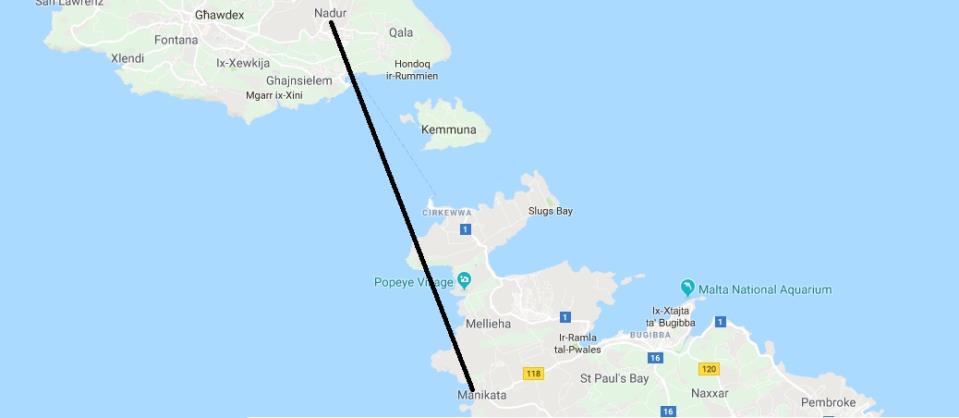The channel tunnel between Malta and Gozo is expected to be built between Manikata and Nadur, it was announced today, with the minister stating that these were areas indicated by the experts.
The exact location within these areas has not yet been decided, and the actual underground route has also not yet been decided. Government is currently awaiting the results of the coring studies.
A conceptual design is expected to be concluded before the end of the year. The tunnel will be around 13km long.
Users of the tunnel will be paying a toll, which will likely be similar to the amount people pay to use the Gozo channel.
Transport Minister Ian Borg said that government is committed to this project.
There will be a lane in each direction, and a third lane to serve in emergencies, he said, adding that the tunnel will be able to see 6,500 vehicles pass daily.
He said that the tunnel will follow EU safety standards, stressing that this is why a Norwegian expert is helping in the project.
He said that many studies have already occurred, including investigative coring, data on the sea bed, the rock beneath the ground.

He said that the University of Malta and OGS Trieste will build a geological model using the studies. "This year we aim to complete the preparatory studies, including the design. The next step is for tenders to be issued to survey and design the roads leading to the tunnel."
He said that the environment is a priority in all these preparatory studies. "We will be commissioning a whole Environment Impact Assessment for them. We will choose entrances which will have the least possible environmental impact."
"In Gozo, we are looking at using developed land in Nadur, while in Malta we are looking at the area between Manikata and Imbordin, which will help clear the bottleneck near Xemxija."
Comino is out of the picture, he said.
He mentioned that the biggest challenge is getting rid of the excavated waste, and said that the EIA will help to address this problem.
Norwegian expert Professor Eivind Grov said he has been on the project since 2016, but also mentioned that he was also involved back in 2011. He said that Nrway began developing sub-sea tunnels in the 80s, and have around 35 of them.
He said that the geological conditions here are well suited for sub-sea tunnel planning.

Asked about the determination of the entrances, he said they would not put an entrance on flat land, and must look for a hillside, making it smaller, less outstanding in the topography. The perfect location, he said, would be a vertical wall of rock. He said they are also taking into consideration the ground level when compared to the sea level.
On the Gozo side, he said, Nadur is the closest point with the lowest terrain.
In terms of timeframes, the minister and the expert said that once the studies conclude, and the route is designed, an international call for a contractor to implement the project would be issued. Excavation work itself, the expert said, would take approximately three years, but setting up for the project itself could take six months as well. Following excavation, the work inside would also need to occur, which would include lighting, road laying etc.
The minister said that many models could be run on a build and operate scenario, where the investor builds and runs the tunnel he said financing will come from tolls.
He indicated that government will most likely look for a strategic partner in the project, probably on a PPP basis. He said that the tender will probably be to design, build and operate, and that there are many schools of thought in terms of what will happen after the return on investment. Minister Borg said that he has not spoken with any potential investors with regards to financing, and to his knowledge nobody from government has.
Photo and video by Michael Camilleri.